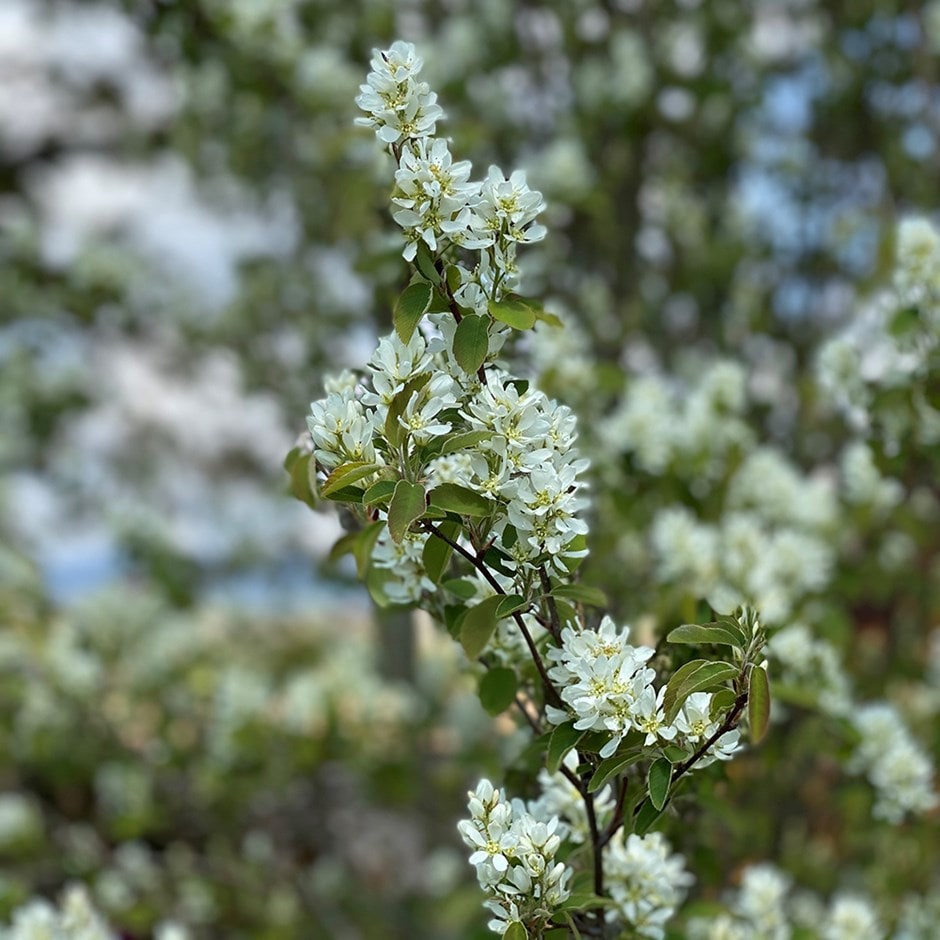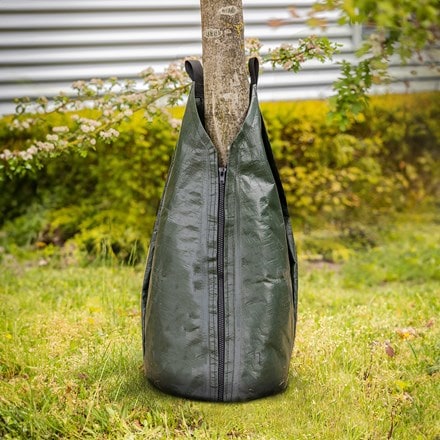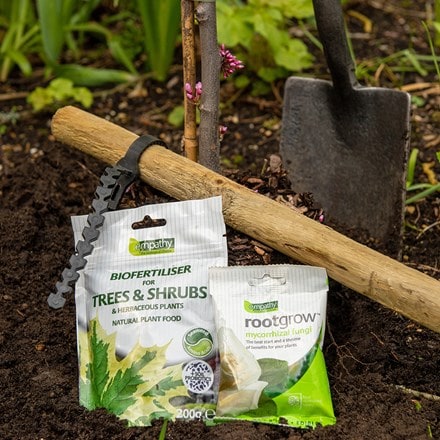Amelanchier × grandiflora 'Ballerina'
serviceberry 'Ballerina' ( syn. Amelanchier asiatica 'Ballerina' )
Eventual height & spread
Amelanchier × grandiflora 'Ballerina'
serviceberry 'Ballerina' ( syn. Amelanchier asiatica 'Ballerina' )
- 12 litre pot | 1.6m tall
- £169.99
- available to order from autumn
- 9 litre pot | 1.5 - 1.8m tall
- £99.99
- available to order from autumn
Delivery options
- Standard £12.99
A vigorous ornamental small tree or large shrub Amelanchier × grandiflora 'Ballerina' is prized for its abundant white spring flowers, reddish-purple autumn foliage, and wildlife value.
Displaying clusters of star-shaped white blooms blushed pink in April alongside its bronze-tinged foliage, which matures to dark green in summer before turning vivid hues of orange, red, and purple towards the end of the season.
Serviceberry grows well in sun or part shade, is tolerant of varying soil types (although prefers thouse with neutral to acidic pH), can withstand pollution, and damp sites.
With multi-season appeal, attractive habit, and hardy nature, 'Ballerina' makes a beautiful flowering specimen tree for landscapes.
Displaying clusters of star-shaped white blooms blushed pink in April alongside its bronze-tinged foliage, which matures to dark green in summer before turning vivid hues of orange, red, and purple towards the end of the season.
Serviceberry grows well in sun or part shade, is tolerant of varying soil types (although prefers thouse with neutral to acidic pH), can withstand pollution, and damp sites.
With multi-season appeal, attractive habit, and hardy nature, 'Ballerina' makes a beautiful flowering specimen tree for landscapes.
When planting your snowy mespilus prepare a hole up to three times the diameter of its root system. Fork over the base of the pit in readiness, incorporating plenty of organic matter into the backfill and planting hole.
Avoiding frozen and waterlogged soil, these should be planted out as they arrive. If you've ordered a bare root tree, soak the roots in a bucket of water for half an hour prior to planting, or if this is not possible, they can be heeled in temporarily, covering their roots with soil, or potted up.
Water regularly during the first growing season to help it establish, especially in dry spells. Apply a mulch of well-rotted compost or bark in spring to retain moisture and suppress weeds, keeping it clear of the stem.
Although tolerant of most soil types, Amelanchier prefers slightly acidic, moist but well-drained soil and benefits from a position in full sun or light shade. Avoid chalky soils where possible unless improved with organic matter.
Pruning is usually minimal but you can shape lightly after flowering if needed. Remove dead, damaged or crossing branches in late winter or early spring. Protect young plants from late frosts where possible, as this can damage emerging buds. Feed in early spring with a balanced fertiliser.
Avoiding frozen and waterlogged soil, these should be planted out as they arrive. If you've ordered a bare root tree, soak the roots in a bucket of water for half an hour prior to planting, or if this is not possible, they can be heeled in temporarily, covering their roots with soil, or potted up.
Water regularly during the first growing season to help it establish, especially in dry spells. Apply a mulch of well-rotted compost or bark in spring to retain moisture and suppress weeds, keeping it clear of the stem.
Although tolerant of most soil types, Amelanchier prefers slightly acidic, moist but well-drained soil and benefits from a position in full sun or light shade. Avoid chalky soils where possible unless improved with organic matter.
Pruning is usually minimal but you can shape lightly after flowering if needed. Remove dead, damaged or crossing branches in late winter or early spring. Protect young plants from late frosts where possible, as this can damage emerging buds. Feed in early spring with a balanced fertiliser.
- Humans/Pets: Fruit are ornamental - not to be eaten
Goes well with
Premium tree planting kit with softwood stake
kit with with softwood stake
£20.95
In stock (shipped within 2-3 working days)


